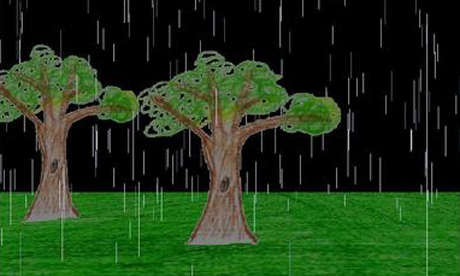Get water wise, says Hackney Friends of the Earth

Image: Dave Pape
Rosebuds were opening in Hackney on the day of the royal wedding. This spring was the driest in England for 100 years; rainfall in the Thames region was 64% of the spring average. River levels, including the River Lea, fell well below typical. It was also the warmest spring on record. No wonder the roses thought June had come early.
This unseasonable weather is not in itself evidence of climate change, because changes in the climate are discerned by patterns revealed over decades. However, climate change is likely to bring greater extremes of weather: both drought and flooding. Nature can adapt to either too much or too little water; extremes of both are more challenging.
In a heavily-concreted environment like Hackney, rainwater finds it difficult to drain into the ground. The trend for paving over gardens – to create parking spaces, or because people don’t have time to tend them – makes the problem worse.
So sudden heavy rain may cause flash flooding as the water can’t drain away fast enough (although porous paving materials are becoming available). When rain falls after a drought the soil may be too compacted for water to permeate; and in warm weather much of it just evaporates away.
Our water resources are under pressure. According to Waterwise, London has less water available than Istanbul. Heavy consumer demand – estimated to be 150 litres a day for the average UK household – is putting river and wetland wildlife at risk.
The water supply is responsible for 2-3% of electricity use in UK, so it makes a relatively small contribution to CO2 emissions; but the carbon footprint increases drastically when water is heated. As with energy-efficiency, water-efficiency should be the norm.
Toilets are massive consumers of water. At Clapton Library rainwater is harvested from the roof for flushing, while at the Arcola Theatre a plastic bottle (with the lid on) is placed in each cistern, which reduces the amount of water needed. For the future, the Arcola are interested in exploring the possibility of waterless toilets.
At home, many things can help: don’t let the tap run while brushing your teeth, put a plastic bottle or a ‘hippo’ in the loo cistern, fix dripping taps and use a washing-up bowl.
Judging by the number of growing projects around the borough (over 80) there is huge interest in growing your own food. Vegetable crops are thirsty, so fit water butts wherever you can – and use the water for cleaning muddy boots and bicycles as well as on plants. Water in the cool of the evening; a twice-weekly drenching is better than ‘little and often.’ Local organisation Growing Communities use porous pipes for targeted watering, apply mulch around crops to keep the soil moist, and space plants closely together to reduce evaporation.
A brown lawn in summer is normal! If it bothers you, throw cooled washing-up water on it and let clover grow in it. Sprinklers are counter-productive as they cause grass roots to stay close to the surface where the soil is drier.
The roots should delve into the damper soil deeper down. Keep a jug by the sink to collect rinse water, and a container in the shower (you can also use that water to flush the loo). Well-established flower borders should not need watering at all; keep the water for vegetables and container plants. Don’t grow plants that need mollycoddling – the climate is changing, and they need to toughen up!
For more tips on saving water, see Waterwise.
